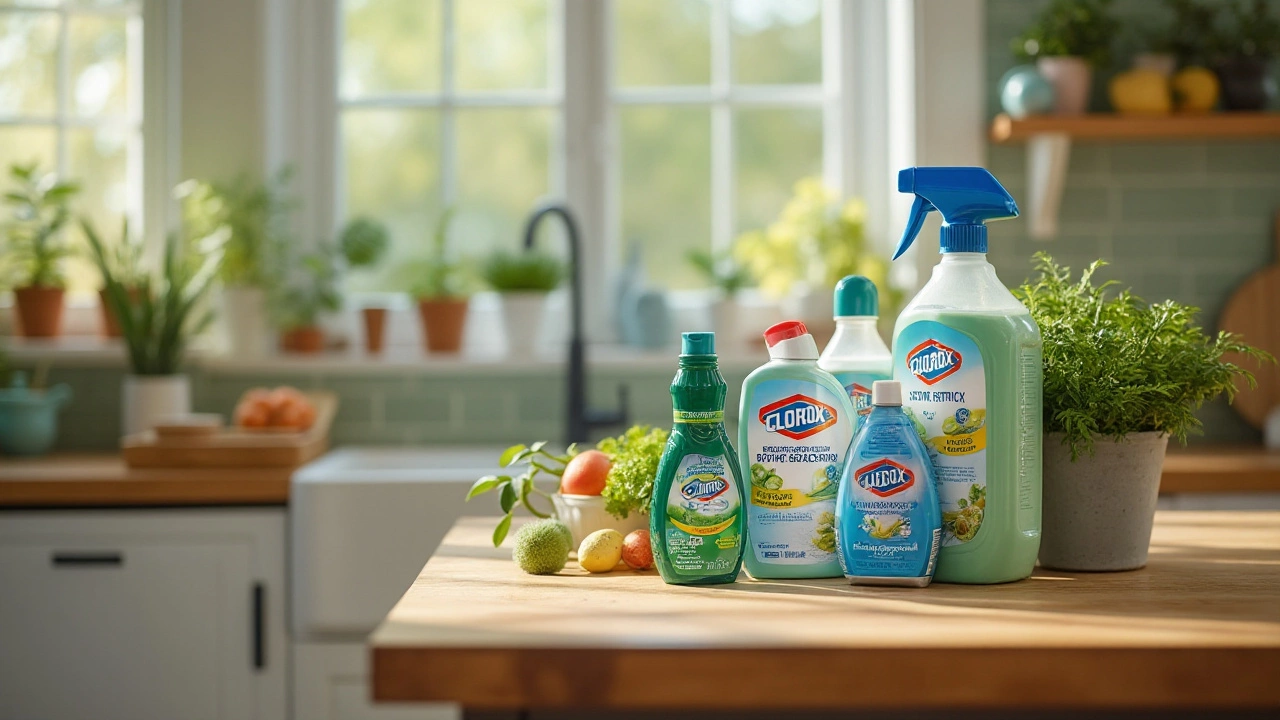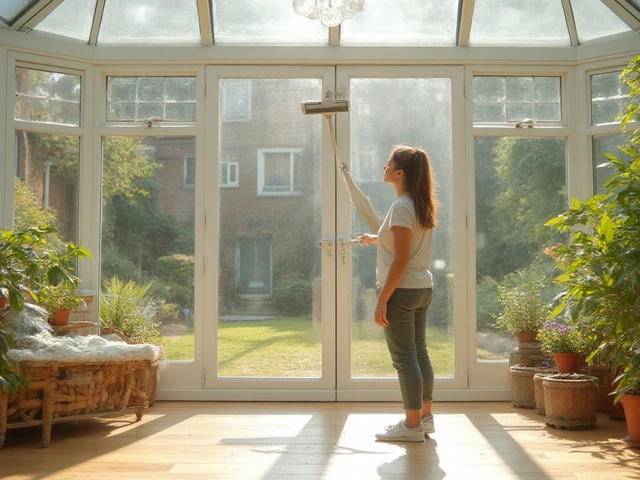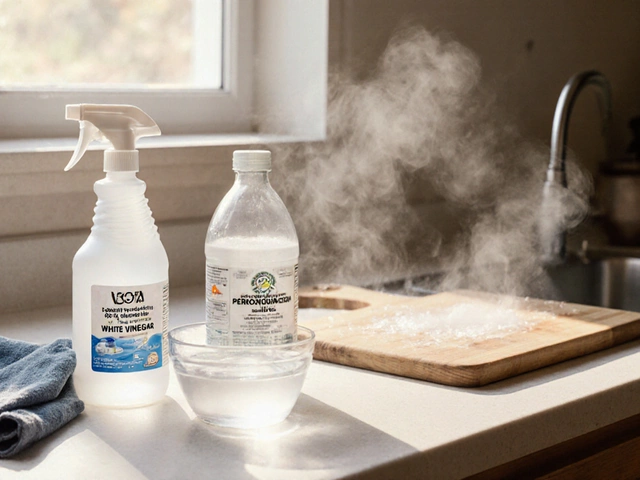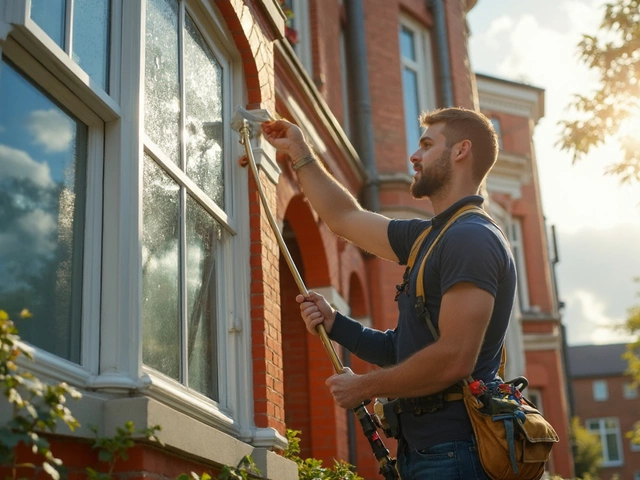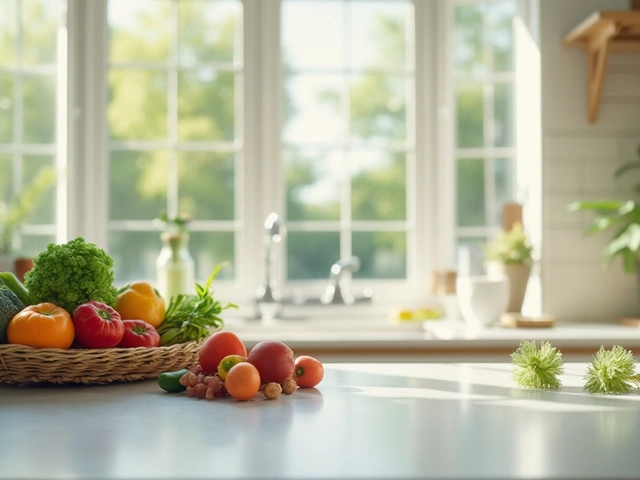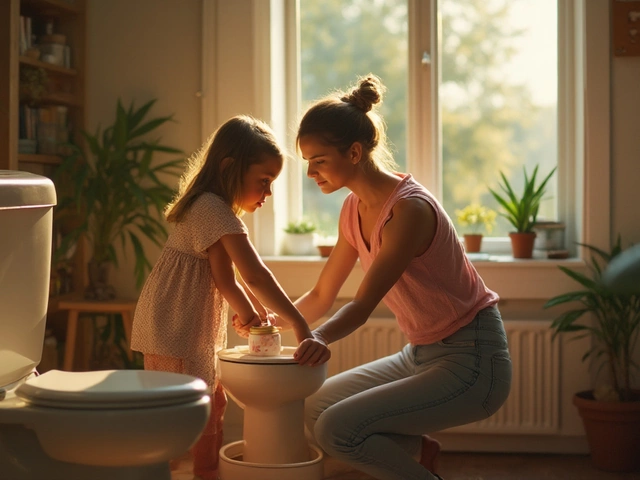In our increasingly environmentally conscious world, the need to reassess common household products for their ecological impacts is more critical than ever. Clorox, a name synonymous with powerful cleaning solutions, has found itself under the magnifying glass of green consumers everywhere.
This article aims to uncover the eco-friendliness of Clorox products by looking at their ingredients, company policies, and available eco-labeled goods. We'll examine how these factors stack up against other market players in the eco-friendly realm. Alongside, you'll discover straightforward ways to enhance the sustainability of your cleaning routine.
- Understanding Eco-Friendly Cleaning
- Exploring Clorox's Product Line
- Deciphering Ingredients and Their Impact
- Clorox's Efforts Towards Sustainability
- Comparisons with Other Eco-Friendly Brands
- Practical Tips for Eco-Conscious Cleaning
Understanding Eco-Friendly Cleaning
Eco-friendly cleaning centers on minimizing the environmental footprint traditionally associated with maintaining a clean living or working space. This approach is about ensuring that our pursuit of hygiene doesn't come at the cost of the planet's health. An integral part of this concept involves using cleaning products that are biodegradable, meaning they break down naturally without leaving harmful residues that could threaten ecosystems. Such products also tend to be devoid of toxic chemicals, reducing potential harm to both the environment and humans. It's fascinating to note that the trends pushing towards green cleaning mushroomed in response to scientific revelations about the hazards posed by synthetic substances commonly found in everyday cleaning agents.
Adopting a sustainable cleaning routine also involves looking beyond the components of cleaning solutions themselves. It extends to the packaging, production practices, and even the carbon footprint of the entire production process. Consumers are increasingly demanding transparency from brands, urging them to disclose details about the sourcing and processing of product ingredients. A 2022 study by the Sustainable Cleaning Council demonstrated that consumers are 40% more likely to purchase products from companies that openly share their sustainability initiatives. Interestingly, shifts in government policies worldwide, particularly in Europe, have started mandating stricter labeling requirements, highlighting the importance of recycling and reducing plastic usage. This has spurred innovation in the industry, making eco-friendly cleaning not only a possibility but a priority.
Of increasing interest in today's eco-conscious market is the role certifications play in guiding consumer choices. Labels such as Green Seal, Ecologo, and the EPA's Safer Choice provide assurance that a product meets specific environmental performance criteria. These certifications, besides validating a product's green claims, often act as a catalyst in encouraging brands to adopt cleaner, greener practices. As consumers, we hold immense power in influencing producers by making informed choices, and it's encouraging to note that, according to a Nielsen survey, over 66% of global consumers are willing to pay more for sustainable brands. A commitment to understanding and choosing eco-friendly products not only supports environmental health but often aligns with better personal health outcomes as well.
"Your purchase decisions today decide the planet's fate tomorrow." — Environmental Science Specialist, Dr. Joanna Keller
Exploring Clorox's Product Line
Amongst the diverse offerings from Clorox, a few key products stand out as representatives of this iconic brand's commitment to tackling grime and germs. The Clorox lineup isn't just about bleach; it includes a variety of cleaning solutions, each designed with a specific purpose, catering to different cleaning needs. Of particular interest are the Clorox Green Works products which have emerged as a notable attempt to address environmental concerns. These products use naturally derived ingredients and avoid the use of chlorine, which is traditionally associated with bleach. This appeals to the eco-conscious consumer looking for safer alternatives that don't compromise on efficacy.
Within the eco-friendly segment, Clorox has made significant strides in offering products that have earned various certifications. For example, a number of Clorox products bear the Safer Choice label, which is a program by the United States Environmental Protection Agency (EPA) designed to recognize products with safer chemical formulations. This certification provides reassurance to consumers who may be skeptical about the real impact of these cleaning solutions on the environment. The versatility of Clorox's product line is also evident in their use across different applications, ranging from household cleaning agents to professional-grade disinfectants used in hospitals. An example is the Clorox Total 360 System, a sophisticated electrostatic spraying system that claims to provide efficient surface coverage with less product compared to conventional application methods.
Interestingly, during their product development and marketing, Clorox has often emphasized their commitment to sustainability. A notable statement from Benno Dorer, the company's CEO, once highlighted,
"Our mission goes beyond profits; it's about preparing a healthier, safer future for the planet."This focus is not only reflected in their product offerings but also in efforts behind the scenes, such as optimizing packaging materials for reduced waste and improving the energy efficiency of their production processes. These initiatives hint at a broader corporate philosophy aiming to align with global sustainability goals. Yet, it's important for consumers to critically assess these claims and examine whether they translate into meaningful action in terms of the eco-friendly attributes that Clorox touts.
For educated shopping, consumers can explore Clorox's detailed product labels and ingredients lists. Transparency is key in this regard, as it allows buyers to make well-informed decisions that align with their environmental values. One might notice ingredients like lactic acid or citric acid within the Green Works line, which offer a friendlier alternative to harsher chemicals while still maintaining cleaning power. Notably, the detergents and soaps often comprise biodegradable components, further enhancing their environmental credentials. This level of detail goes a long way in building trust and maintaining Clorox’s brand integrity in the sustainable cleaning sector.
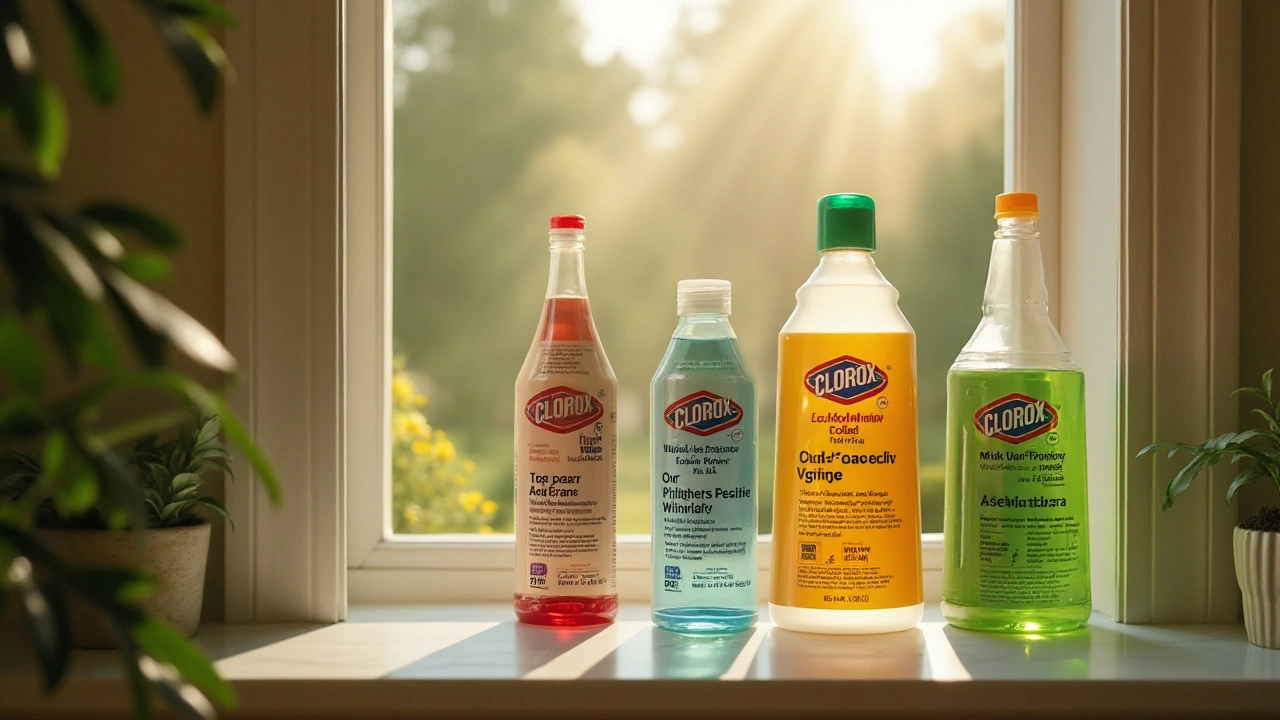
Deciphering Ingredients and Their Impact
When it comes to evaluating whether Clorox is truly eco-friendly, understanding the ingredients in their products is a key part of the puzzle. Many cleaning solutions, both conventional and green, contain a cocktail of chemicals designed to kill germs, lift stains, and leave surfaces gleaming. However, these same chemicals can have unintended consequences on our planet's delicate ecosystems. By unpacking ingredient lists, we gain a clearer picture of their environmental impact.
One primary ingredient found in traditional Clorox products is sodium hypochlorite, a compound known for its powerful bleaching properties. While undeniably effective for disinfecting, it's been shown to contribute to water pollution when not properly disposed of. People often underestimate the concentration at which such chemicals pose hazards. Aside from sodium hypochlorite, Clorox products may contain fragrances composed of undisclosed synthetic chemicals. These can release volatile organic compounds (VOCs), contributing not only to indoor air pollution but also potentially affecting those with sensitivities or allergies.
In an effort to appeal to environmentally conscious consumers, Clorox has introduced the GreenWorks line—products marketed as being made with biodegradable ingredients. This line substitutes some harsher chemicals with plant-based alternatives. Nevertheless, skepticism remains about the overall lifecycle impact of these ingredients, since sourcing plant materials can still entail significant energy and resource investments. Beyond the choice of raw materials, the effect of the entire production process on the environment must be considered. In this regard, Clorox asserts its commitment to sustainability, but verifying such claims requires scrutinizing third-party certifications.
Data from a study published by the Environmental Working Group highlights that around 53% of popular cleaning products contain ingredients known to harm respiratory health when inhaled over prolonged periods.
As consumers grow more savvy, they demand transparency about what's in the products they bring into their homes. Clorox has responded partially by listing ingredients on their website and labels, though many terms remain vague for the average customer. For instance, the category 'fragrance' can hide a blend of dozens of synthetic chemicals. It prompts a pressing demand for clearer labeling and accountability in ingredient sourcing. While Clorox continues to broaden its range of perceived sustainable products, some advocate for more robust industry regulations to ensure claims like 'green' or 'eco-friendly' are not merely marketing strategies.
To measure the impact of Clorox products on the environment effectively, it's essential to rely on trusted scientific assessments and peer-reviewed research. Opting for products with eco-certifications, like EPA's Safer Choice label or Green Seal, provides additional assurances. These certifications evaluate everything from ingredient safety to packaging sustainability, offering a more balanced assessment. The need for these independent endorsements increases as bottling practices and ingredient sourcing come into public scrutiny. By paying attention to these details, consumers can better navigate their options and choose genuinely sustainable cleaning products.
Clorox's Efforts Towards Sustainability
When thinking about cleaning solutions, Clorox often springs to mind, known for its powerful disinfectants that manage to clean even the toughest stains. However, the question of how these products affect the environment is more relevant now than ever. Recognizing this shift in consumer awareness, Clorox has taken meaningful steps in its journey towards sustainable practices. They have embarked on an ambitious plan to incorporate more environmentally friendly practices within their operations. Clorox's 'Safe Chemistry Commitment', aimed at transitioning to safer and cleaner product formulations, marks a significant step in their sustainability efforts.
As part of these initiatives, Clorox aims to reduce its environmental footprint by incorporating recycled and recyclable materials in its packaging. Approximately 98% of its retail packaging in the United States is now recyclable. This move aligns with their goal of reducing waste in landfills, which is one pillar in their long-term sustainability plan. The brand’s commitment doesn't stop at packaging. They are also working hard to source their raw materials responsibly. Efforts to ensure the cleaners come from sustainable and renewable resources whenever possible are reflected in their visible product labels, assuring consumers of their eco-friendly efforts.
Moreover, a cornerstone of Clorox’s sustainability strategy includes achieving a significant reduction in greenhouse gas emissions. By 2030, they have set a target to achieve net-zero emissions, aligning with the Paris Agreement directives. Clorox plans to accomplish this through energy reduction initiatives and transitioning to renewable energy sources across their production facilities. While ambitious, these goals are driven by the need to meet consumer demand for greener options.
In promoting transparent operations, Clorox has sought to build consumer trust through initiatives like the Ingredient Communication program. By sharing ingredient details in a user-friendly manner, they ensure consumers are well informed about the products they're purchasing, particularly those labeled 'green'. This open communication strategy not only bolsters customer confidence but also holds Clorox accountable for the goals set in its sustainability agenda.
The NRDC has noted, "Companies like Clorox, by publicly engaging in transparent operations and targeting net-zero emissions, serve as leaders for the industry sector, pressing other companies to follow suit." This recognition from such a well-regarded environmental organization underscores the scope and impact of Clorox's moves towards sustainability.
Additionally, Clorox has partnered with Earth Day Network to promote sustainable practices at the grassroots level. This partnership involves supporting educational campaigns and community initiatives designed to inspire greater environmental awareness. The goal is to nurture a culture shift towards green living, helping consumers make informed and more sustainable choices, further contributing to their overarching environmental objectives.
As Clorox continues to evolve and adapt, the company's endeavors reveal a clear understanding of their role in corporate social responsibility. By merging technological advancements with eco-awareness, Clorox aspires to lead by example, ensuring that future generations inherit a greener, more sustainable planet.
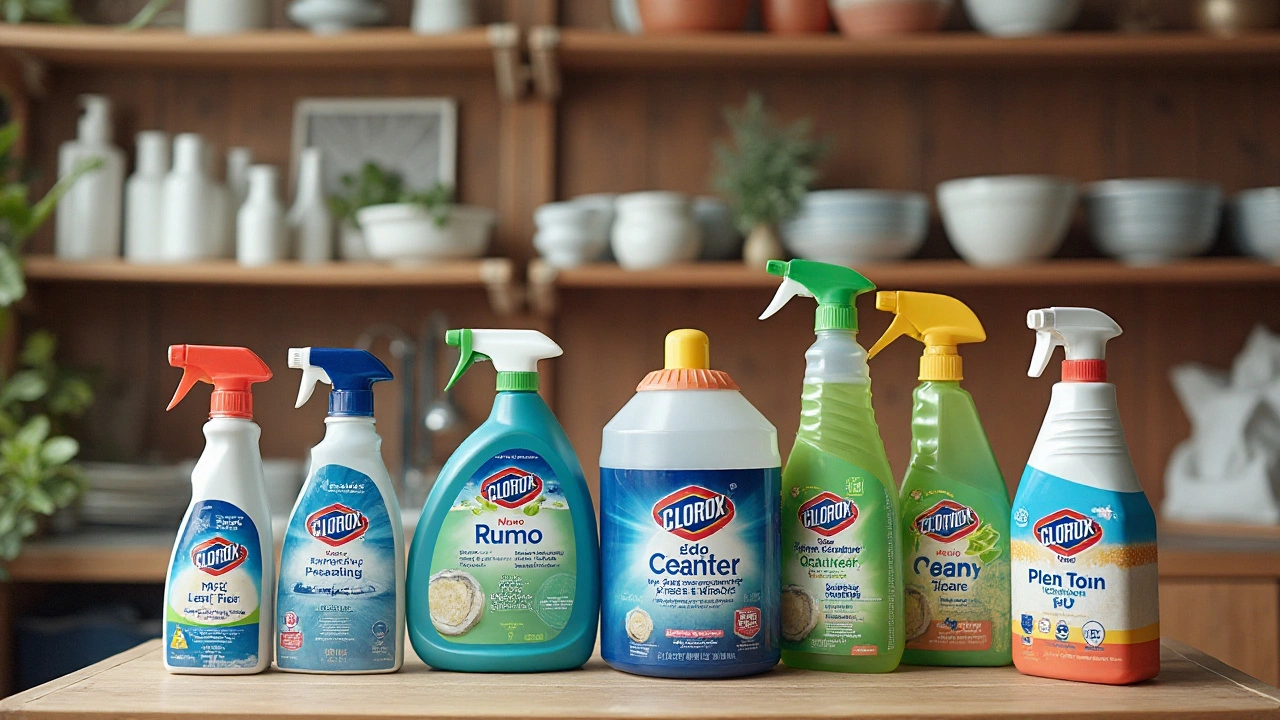
Comparisons with Other Eco-Friendly Brands
In a marketplace bustling with environmentally conscious choices, it’s only natural to wonder how Clorox stacks up against other eco-friendly products. Many consumers are swapping their traditional cleaning staples for those brands that boast both efficacy and a smaller carbon footprint. When we think of heavy hitters in the green cleaning space, companies like Seventh Generation and Method frequently come to mind. Both brands have cultivated reputations based on being sustainably driven, offering products that strike a balance between environmental responsibility and cleaning power. These brands frequently use plant-based ingredients and are transparent about their supply chain practices, aiming to ensure safe usage for both people and the planet.
Seventh Generation, for instance, claims to formulate its products without any fragrances, dyes, or unnecessary toxins, asserting a position of leading-edge environmental advocacy. It's steering towards a goal of being fossil fuel-free and supports sustainable forestry, actively challenging other brands to keep pace with their strides. Method has earned accolades for its innovation in packaging, utilizing recycled materials, and even developing biodegradable components for their cleaning solutions. Their partnerships with various environmental watchdogs offer a layer of credibility to their claims of sustainability.
When we look at the sustainable cleaning efforts of Clorox, it's apparent the brand is trying to catch up. Clorox Green Works, their foray into the green space, is commendable but still developing compared to its well-established competitors. Clorox has committed to a series of sustainability goals, including reducing their carbon footprint and using sustainably sourced materials, which are important steps in the right direction. The challenge for Clorox will be to meet these goals while maintaining the intense efficacy their traditional products are known for.
“Our commitment to sustainable products is unwavering,” said Clorox's sustainability director in a recent statement. “But we need to ensure these products stand the test of efficacy our customers have come to expect.”
Another defining element lies in certifications. Brands like Seventh Generation and Method carry a range of certifications like Leaping Bunny, certifying they are cruelty-free, and B Corp, ensuring high social and environmental performance. While Clorox has made several eco-centric commitments, obtaining such certifications across a broader range of products could further strengthen their standing in this arena. It’s clear that transparency, genuine care for the environment, and an actionable roadmap towards sustainable practices are highly valued by eco-conscious consumers.
To aid in digesting the differences between these brands' efforts towards sustainability, consider the table below highlighting some key areas:
| Aspect | Clorox | Seventh Generation | Method |
|---|---|---|---|
| Certifications | FSC for select lines | Leaping Bunny, B Corp | Leaping Bunny, B Corp |
| Packaging | Some recyclable | Recyclable | Recyclable, biodegradable |
| Main Ingredients | Mixture of natural & synthetic | Plant-based | Plant-based |
Ultimately, the journey towards eco-friendly products involves a genuine commitment to the planet that aligns with consumer demand. While Clorox has shown a willingness to evolve, it will need the resilience and transparency that has placed its competitors on the map to win over the eco-conscious shopper opportuning for sustainable cleaning solutions.
Practical Tips for Eco-Conscious Cleaning
Embarking on the journey to greener living doesn't mean you have to compromise on cleanliness or hygiene. With a few smart swaps and mindful practices, you can turn your cleaning routine into one that not only keeps your home sparkling but also reduces your carbon footprint. One fundamental tip is to always read labels. Familiarizing yourself with terms such as 'biodegradable', 'non-toxic', and 'plant-based' can guide you towards more eco-friendly choices. For instance, many cleaning products, even the ones labeled as 'green', might contain questionable ingredients, and a keen eye on labels can help you avoid those. Always aim for eco-friendly products that list their ingredients transparently.
Another effective strategy is making the switch to reusable cleaning tools. Single-use products, while convenient, generate an enormous amount of waste. Consider using microfiber cloths, which are not just reusable but highly effective at trapping dirt and bacteria. Likewise, swapping out disposable mop pads for washable alternatives can significantly cut down on waste. The beauty of these alternatives is their durability; a well-cared-for microfiber cloth can last years, proving more economical in the long run.
Homemade cleaning solutions are not just an economical option but also allow you total control over what chemicals enter your home environment. Simple ingredients such as vinegar, baking soda, and lemon can be surprisingly effective at cutting grease, eliminating odors, and disinfecting surfaces. Try mixing equal parts vinegar and water for a natural all-purpose cleaner, or use baking soda sprinkled over surfaces as a gentle scrub. Not forgetting the aroma, adding a few drops of essential oils like lemon or lavender can uplift the scent of your homemade solutions, enhancing the cleaning experience.
Water conservation is another vital aspect of eco-conscious cleaning. It's easy to overlook how much water is used, be it while washing dishes, cleaning floors, or doing laundry. Opt for appliances like dishwashers and washing machines that boast high efficiency and low water usage. Taking shorter showers and closing taps when not in immediate use can also contribute significantly to reducing water wastage. Keep appliances well-maintained, as leaks can go unnoticed and result in considerable water loss.
Additionally, consider sourcing sustainable cleaning brands that have committed to environmentally friendly practices. Brands like Seventh Generation and Method are known for their eco-conscious approach, offering products that are biodegradable and packaged in recycled materials. A quick online search or a trip to a dedicated eco-store can lead you to a bounty of alternatives that align with your values. Supporting such companies also promotes larger systemic change, encouraging other manufacturers to adopt sustainable practices.
Finally, community initiatives such as local swaps or refill stations can be a supportive way to maintain your eco-friendly habits. Many organizations offer facilities where you can refill containers with bulk cleaning products, reducing reliance on single-use plastics. A visit can be an eye-opener, providing inspiration from others who are on a similar eco-friendly journey. As they say, "It takes a village," and involving community can make going green an endeavor not only beneficial for the planet but also enriching for your local connections.
"The antidote to climate anxiety is action," remarked Eric Holthaus, a prominent climate change advocate. By making small, intentional changes in household cleaning, you join a collective movement towards a healthier planet.
